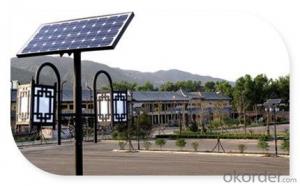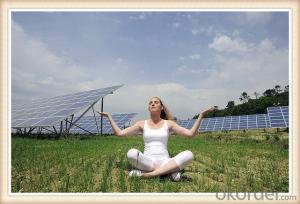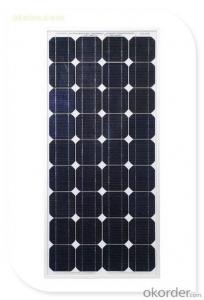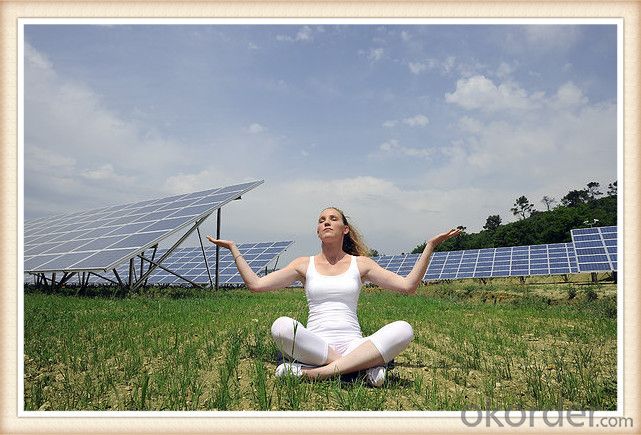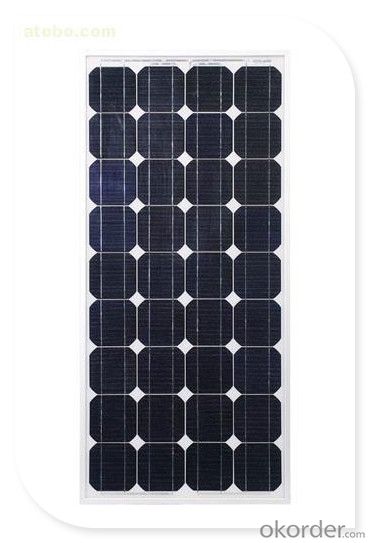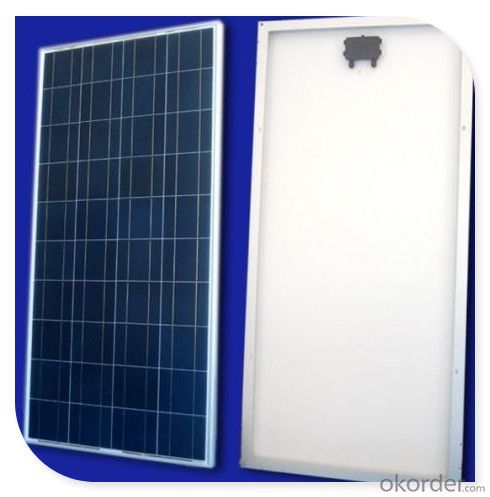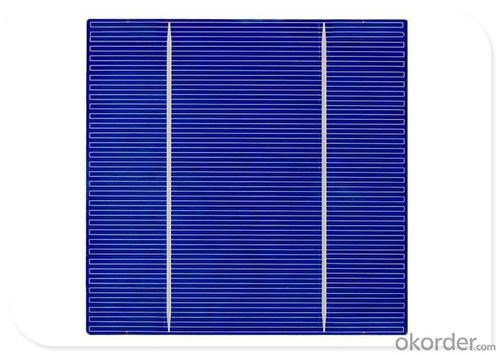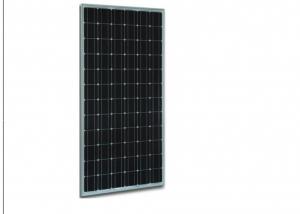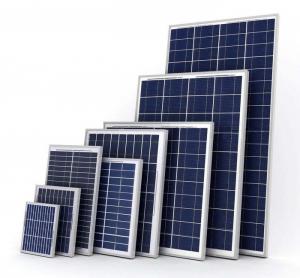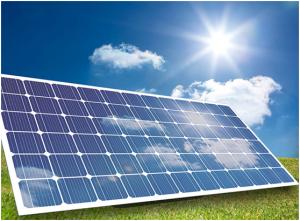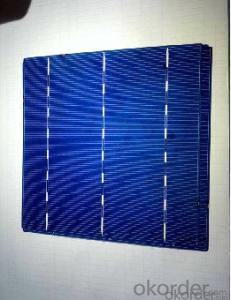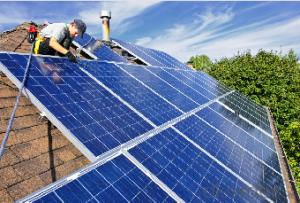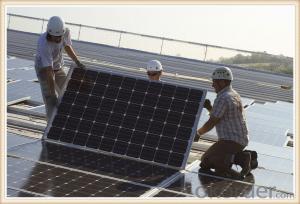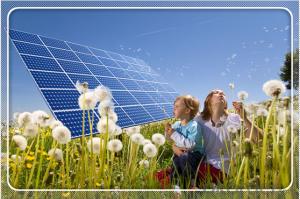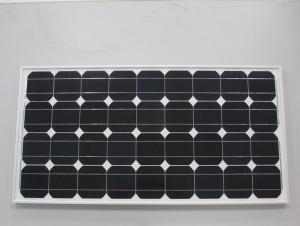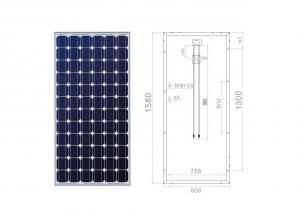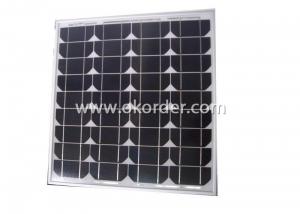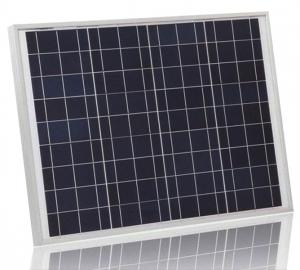Best Folding Solar Panels - 10W Efficiency Chinese Solar Panels for Sale 5-200W
- Loading Port:
- China main port
- Payment Terms:
- TT OR LC
- Min Order Qty:
- 10000 watt
- Supply Capability:
- 100000 watt/month
OKorder Service Pledge
OKorder Financial Service
You Might Also Like
Specification
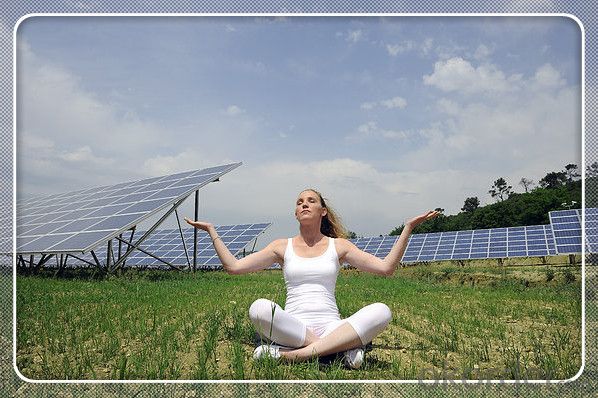

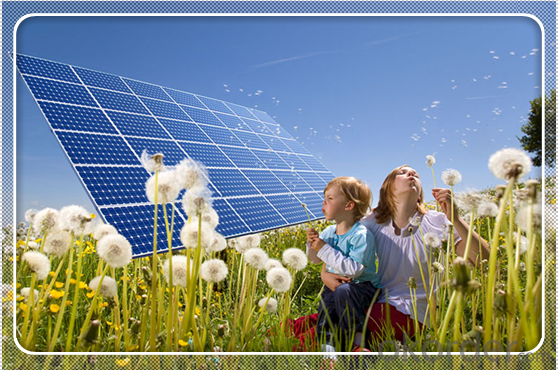
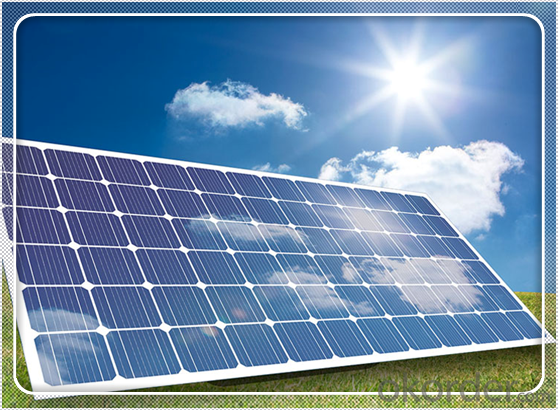
Solar Module Introduction
Solar Module is the core part of solar PV power systems, also is the highest value part of it. The function of Solar Module is to convert the sun's radiation to electrical energy, or transfer it to battery and store in it, or to drive the load running.
The Product has been widely used in space and ground, it mainly used for power generation systems, charging systems, road lighting and traffic signs areas. It could offer a wide range of power and voltage, and with high conversion efficiency, and long service life.
Solar modules use light energy (photons) from the sun to generate electricity through the photovoltaic effect. The majority of modules use wafer-based crystalline silicon cells or thin-film cells based on cadmium telluride or silicon. The structural (load carrying) member of a module can either be the top layer or the back layer. Cells must also be protected from mechanical damage and moisture. Most solar modules are rigid, but semi-flexible ones are available, based on thin-film cells. These early solar modules were first used in space in 1958.
Electrical connections are made in series to achieve a desired output voltage and/or in parallel to provide a desired current capability. The conducting wires that take the current off the modules may contain silver, copper or other non-magnetic conductive transition metals. The cells must be connected electrically to one another and to the rest of the system. Externally, popular terrestrial usage photovoltaic modules use MC3 (older) or MC4 connectors to facilitate easy weatherproof connections to the rest of the system.
Secification
Model Type | |
Peak Power-Pmax(W) | 5-200W |
Open Circuit Voltage-Voc(V) | 44.2 |
Maximum Power Voltage-Vmp(V) | 36 |
Short Circuit Current-Isc(A) | 5.4 |
Maximum Power Current-Imp(A) | 5 |
Maximum System Voltage | 1000V DC |
Maximum Series Fuse Rating | 10A |
Power Tolerance | -1~+3% |
Temperature Coefficients of Pmax | -0.45%/℃ |
Temperature Coefficients of Voc | -0.348%/℃ |
Temperature Coefficients of Isc | 0.031%/℃ |
Nominal Operating Cell Temperature | 44.5±2℃ |
Standard Testing Condition(STC) | Irradiance:1000W/m²;Temperature:25℃;AM=1.5 |
Qualification Test Parameters | |
Operating Temperature | -40℃~+85℃ |
Storage Temperature | -40℃~+85℃ |
Pressure Bearing | ≥5400Pascal/m² |
Wind Bearing | ≥5400Pascal/m² |
Mechanical Characteristics | |
Cell Size | Mono 125*125mm±0.5 |
No.of Cells | 72pcs(6*12) |
Dimension | 1580*808*40mm |
Weight | 15.5Kg |
Glass | 3.2mm High Transmission,Low Iron |
Frame | Anodized Aluminum Alloy |
Junction Box | IP65Rated |
Internal Diodes | 3 Bypass Diodes |
Cable | 1*4.0mm² Length 900mm |
Images
Packing & Shipping:
We have rich experience on how to pack the panels to make sure the safety on shipment when it arrives at the destination.
The normal size is packed by 25pcs/ carton / pallet. Paper carton for FCL shipping and wood carton for LCL shipping.
Warranty:
For c-Si panel: 25years output warranty for no less than 80% of performance, 10 years output warranty for no less than 90% of performance. Free from material and workmanship defects within 5 years.
For a-Si panel: 20 years output warranty for no less than 80% of performance, 10 years output warranty for no less than 90% of performance. Free from material and workmanship defects within 2 years.
FAQ:
(1)What price for each watt?
It depends on the quantity, delivery date and payment terms.
(2)What is your size for each module? Can you tell me the Parameter of your module?
We have different series of panels in different output, both c-Si and a-Si. Please take the specification sheet for your reference.
(3)Can you provide the peripheral products of the solar panels, such as the battery, controller, and inverter? If so, can you tell me how do they match each other?
Actually we are only manufacturer of solar panels, but we could try to source them for you in China if you need. We could provide you an optimal system design to instruct you how to install.
(4)Do you have the CE, TUV, UL Certification?
We’ve already passed all the tests, and any certificate is available.
(5)Have you ever sold your products to companies in my country?
Of course, we have customers in all general PV markets, but I think we should expand our market share along with the market growth.
(6)When did your company set up? You are a new company, how can I believe your quality?
We entered into Solar PV industry in 2005, now we have several plants in manufacturing of a-Si and c-Si panels, and our capacity is 220MW per year. Till now we have already passed all the tests by authorized laboratories, e.g. TUV, VDE, UL.
(7)Can you help us install the module if we cooperate with you?
We haven’t entered into installation sector, but we have the plan in near future.
(8) How do you pack your products?
We have rich experience on how to pack the panels to make sure the safety on shipment when it arrives at the destination.
(9) Can you do OEM for us?
Yes, we can.
(10)Can we visit your factory?
Surely, I will arrange the trip basing on your business schedule.
- Q: Can solar panels be installed on a barn or shed?
- Yes, solar panels can be installed on a barn or shed. In fact, barns and sheds often have large roof spaces that are ideal for solar panel installation. This allows the building to generate its own clean and renewable energy, reducing electricity costs and environmental impact.
- Q: Can solar panels be used in areas with high levels of insect activity?
- Yes, solar panels can be used in areas with high levels of insect activity. While insects may occasionally land on the panels, it does not significantly impair their functionality or efficiency. Regular cleaning and maintenance can help ensure optimal performance and prevent any long-term issues caused by insects.
- Q: How do solar panels affect satellite dish reception?
- Solar panels can potentially interfere with satellite dish reception if they obstruct the line of sight between the dish and the satellite. However, modern satellite technology and proper positioning of both the panels and the dish can often mitigate any negative impact on reception.
- Q: I am building a solar car for the energy wiz competition and I was wondering how I could possibly get my solar panel to shift sideways
- having solar panels move like that on a mobile platform is inadvisable -- especially if there is a dynamic wind load resulting from the motion of the mobile platform. Even having a tilt mechanism is dubious at best. think of what limited marginal gain would be gained by mounting a small solar panel on the moon roof of a car. (ultimately, the best answer is to turn the car so that it's angle to the sun is optimal -- but the road/travel direction constraints are what ultimately prohibit that.) while there are ways to build sliding panels, the weight constraints would interfere with your weight/thrust ratios to the point of futility. if you really need that panel somewhere else, don't slide it out of the way, just buy another panel and mount it there. it's more expensive, but it's actually the cheapest solution in terms of design on a mobile platform.
- Q: Im curious because I read about a boy who invented a 3d solar panel, using a pyramid he designed a solar panel that collects light more efficiently. Now I have a question. Why cant I design a solar panel that takes adventage of convex and concave mirror's and use a surface that collects light and then focus's the suns energy into a beam and take the beam into a chamber where the solar panels are sitting and surround them with mirrors as well, so any light not obsorbed by one particular spot is reflected to another area for reabsorbtion. I know solar panels dont absorb light but perhaps that will allow more light to create the effects it needs.
- I don't know anything about the 3D thing. You cannot get more energy out, than goes in. Energy will only hit the mirrors. With some loss of efficiency they would reflect a focused beam into the chamber, where with some more losses would reflect it to the solar panels. It would be more efficient just to expose all the panels to sunlight.
- Q: How do you make solar panels and do you need a lot of them to make electricity?
- It's possible to put together pre-made solar cells into your own panels, but the result will be far less durable, and more costly than simply buying commercial panels. You may encounter some websites offering to sell you information on how you can power your home cheaply with homemade panels. Every one of those I've seen is a scam. Save your money. Do you need a lot of panels to make electricity? To make a system that is worth it generally takes at least a dozen panels, although I'm sure exceptions exist. Also, it generally needs a professional install to meet legal requirements, although a few skilled homeowners do manage to do their own.
- Q: Can solar panels be installed on a museum or cultural institution?
- Yes, solar panels can be installed on a museum or cultural institution. In fact, many museums and cultural institutions have embraced renewable energy and are installing solar panels to reduce their carbon footprint and energy costs. These panels can be placed on rooftops, parking lots, or even integrated into the building's architecture, providing a sustainable energy source while preserving the aesthetic appeal of the institution.
- Q: I don't remember what number exactly but it's in the single digits. This number represents how efficient solar panels are at capturing the sun's rays and converting it into electricity.Why?
- The latter link has a decent explanation, if not a bit technical: One of the most fundamental limitations on solar cell efficiency is the band gap of the semiconductor from which the cell is made. In a photovoltaic cell, negatively doped (n-type) material, with extra electrons in its otherwise empty conduction band, makes a junction with positively doped (p-type) material, with extra holes in the band otherwise filled with valence electrons.
- Q: Due to erratic power cuts in my area I want to make up by using a 30watt solar panel. My decoder is 30watt but my TV is 70W. I need something small. I don't have problem with sound. Just picture.
- Do what we do when power is cut (although we have very reliable power - we loose as much as 2 hours a year), is go Amish. That is go without powered technology. Now, for you, you need more than a solar panel (and likely more than 30W, but that is a start) - you need a battery or set of batteries to store the collected power. 20Ah might do. You need an inverter to power things. For that, likely a 300W will do. For a TV, go shopping, and look at the labels on the back of the TVs. I just bought a 24 TV rated at 40W. If you get a 9 LED TV, it may be likely you can run that directly from battery, for many have separate DC brick supplies. With those, you can make a cable to power it directly from a 2V or so battery, if the supply can make 2 to 5V. Depending on your provider, you may be able to get a mini-decoder which uses a separate brick or wall supply, which means the decoder likely can be directly battery powered. Such a decoder may draw less than 20W.
- Q: Can solar panels be installed on tile roofs?
- Yes, solar panels can be installed on tile roofs. Specialized mounting systems are designed to secure the panels to the tile roof without damaging it, ensuring a safe and efficient installation.
Send your message to us
Best Folding Solar Panels - 10W Efficiency Chinese Solar Panels for Sale 5-200W
- Loading Port:
- China main port
- Payment Terms:
- TT OR LC
- Min Order Qty:
- 10000 watt
- Supply Capability:
- 100000 watt/month
OKorder Service Pledge
OKorder Financial Service
Similar products
Hot products
Hot Searches
Related keywords
